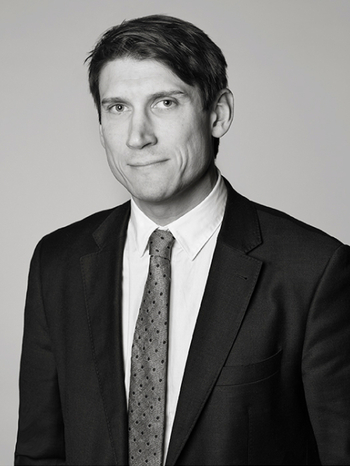Agnes Cleve
Self portrait by the easel
Signed Agnes Cleve and dated 1911. Canvas 64 x 74 cm.
Exhibitions
Norrköpings Konstmuseum, "Agnes Cleve", 5 June-21 August 1988, cat No 4, reproduced in catalogue.
Bohusläns Museum, Uddevalla, "Agnes Cleve & John Jon-And - två modernistiska pionjärer", 17 April - 11 June 1995.
Mjellby Konstmuseum, "De berömda och de glömda-Kvinnliga svenska modernister 1900-1930", 11 June-3 September 2006, reproduced full page in colour page 13.
Norrköpings Konstmuseum, "De berömda och de glömda- Kvinnliga svenska modernister 1900-1930", 15 October 2006-7 January 2007, reproduced full page in colour page 13.
Sävstaholms slott, "I en ny tids anda - Kvinnliga modernister från 1900 till 1930", summer 2004, reproduced in colour page 32.
More information
Also signed with stamp on verso.
Designer
Agnes Cleve was born in Uppsala in 1876. After completing her secondary education, she studied art at the School of Arts and Crafts in Stockholm. When she started a family she moved to Gothenburg and studied art at Valand where Carl Wilhelmsson was her teacher. After a difficult divorce, Angnes moved to Paris in 1913, where she studied for Le Fauconnier together with John Jon-And. They eventually got married, and later moved to Stockholm and settling in Gothenburg. The couple often stayed at their summer cottage by the Gullmar Fjord, a place called Källviken, which became a gathering point for several artists, including the couple Gabriele Münter and Wassily Kandinsky. Kandinsky was, in his homecountry Germany, the leader of the group “Der Blaue Reiter”, a group which advocated for cubism and German modernism. It is without a doubt that they influences Agnes Cleve and Jon-And. Cleve has done several artists trips to paint Sandhamn, Skagen, London, Italy, Holland, Belgium, North Africa, Spain, Turkey, and the USA (where he even lived for a period). In Cleve’s collection, one can find figure paintings, window views, portraits, cityscapes, and west coast genres. Agnes Cleve's art was exhibited across Europe (Paris, Amsterdam, Copenhagen, among others). There was a lot of talk surrounding her exhibition together with none other than Sigrid Hjertén in Paris in 1937, and she was classified by a German critic as Sweden’s most influential artist during the first half of the 20th century. She is currently represented by the National Museum, Gothenburg’s Art Museum, Gävle Museum, Norrköping’s Museum to name a few.
Read more



































